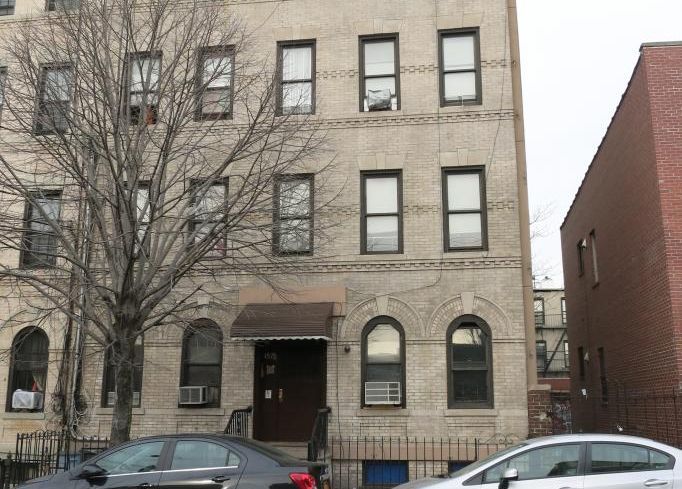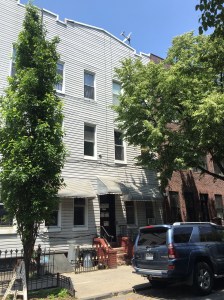Young Investors Flocking to Rent-Regulated Properties in Brooklyn
A new generation of buyers is looking longingly at rent-regulated properties in Kings County
By Nicholas Rizzi October 9, 2018 11:00 am
reprints
Daniel Figotin got his start in Brooklyn real estate when he was 31, managing some buildings for his parents. However, when stricter regulations for rent-stabilized buildings were passed, his mother, Mila Figotin, sold her stake in those projects while her son kept at it.
“Every time I’m purchasing something that has any sort of regulations in it, she thinks I’m nuts,” said Figotin, the principal of Fimida Enterprises. “I keep running towards them. I’m still young and willing to deal with all the headaches versus her that’s drained and moved on from this real estate.”
But at 40 years old, Figotin is relatively old for people chasing these types of investments, according to several brokers with whom Commercial Observer spoke. Some older investors—usually over 40—were scared off by rent laws passed in 2015 and fled the market, while a pool of younger investors has since jumped in with the optimism of youth.
“I find good deals and there are enough margins if things become a little bit more expensive,” said Yaakov Lefkowitz, 24, a principal of Lefko Capital Group, who has been buying up buildings with partners in Brooklyn’s Bedford-Stuyvesant and Bushwick neighborhoods.
While Lefkowitz doesn’t only target rent-regulated buildings, he doesn’t shy away from them either. He has a separate management company that handles the bulk of the work for them while he focuses on acquiring new properties for Lefko.
And he has a pretty simple story for how he got into buying his first property four years ago, at age 20.
“A friend told me it was a good deal and I had some extra money,” Lefkowitz said.
While younger buyers—in the sub-40-year-old range—have always used the rent-regulated multifamily market to get into real estate, there has been an uptick in such investors since the state’s rent laws became stricter in 2015.
For those youngins, they have only known New York post-regulatory changes.
“The buyer pool in Brooklyn right now is very sophisticated and very on top of the current state of [rent regulation],” said Matthew Cosentino, a partner at Brooklyn-based TerraCRG. “They’re asking the right questions up front, they’re not waiting for a lawyer.”
These buyers, increasingly armed with college degrees, see rent-regulated buildings in Brooklyn as a way to get a foothold in the real estate market because of the lower price points, usually from $1 to $2 million. They’re generally priced out of Manhattan and attracted to Brooklyn because it has more inventory than Manhattan, less competition and the borough is booming.
“You have a lot of people who had gone to school, who previously were going into law careers or finance careers,” Cosentino, 39, said. “Because of the money that’s being generated in Brooklyn real estate, there’s been a big shift towards real estate as a very attractive profession, whereas in the past real estate was seen as something that people with these professional degrees wouldn’t get into.”
“My generation has seen some big hits in the market,” he added. “In 2000 there was the dotcom bubble, obviously 9/11 and then 2009 [with the market crash]. I think for younger people real estate has become a really attractive path.”
In Cosentino’s current portfolio, the rent-stabilized properties attracting the most interest from younger buyers are two buildings in Bushwick: the eight-unit rent-stabilized building at 1575 DeKalb Avenue in Bushwick priced at $2.2 million and the six-unit (four market-rate and two rent-stabilized) 247 Himrod Street for $2.4 million.

The new young buyers—a mix of companies and individuals—have generally been tapping family and friends to raise the capital for their investments, with some coming to under-$10 million deals with 40 backers, according to Andrew Sasson, a managing director of investment sales at Ackman Ziff.
“Once they get that first deal it seems that the list of buyers or sources of equity grows exponentially overnight,” he said. “The real difficulty is getting that first deal done.”
They’re also planning on buying multiple buildings—not just one or two like some older buyers—but are more patient in waiting for good deals.
“While they are plentiful, and they are filling the pool, they’re much slower in their acquisition activity,” Shaun Riney, an investment sales broker at Marcus & Millichap, said of buyers ages 20 to 40. “Today’s buyer will buy maybe one to three buildings a year, max. They’re going slower and not getting ahead of their skis.”
Despite his mother’s protests, Figotin has still focused on buying rent-regulated properties in Sunset Park, Brooklyn—along with other new developments—because he feels the neighborhood is poised to pop and still thinks they’re “a safe investment for educated buyers,” he said.
Rent-regulated properties offer a stable rent roll compared to free market buildings and “vacancies are never going to be an issue” because units fill up quickly, Cosentino said. A vacant unit can actually be a benefit because it allows landlords to hike up the rent.
The multifamily market around the city has been sluggish since 2015, due to high prices and the dropping stock market eating up capital for real estate, but has started to pick back up more recently, especially in Brooklyn, according to Sasson.
Reports from Ariel Property Advisors this year found that transactions and dollar volume for multifamily sales have increased in every borough compared with last year, with Brooklyn leading the city in terms of dollar volume with $2.12 billion.
Sassoon said that rent-regulated buildings make up a large part of the Brooklyn market and there are nearly 14,000 rent-stabilized buildings—which are six-units and above—in the borough, Kurt Stuart, head of Northeast commercial term lending at J.P. Morgan Chase, wrote in a March Commercial Observer column.
Older owners of multifamily properties that Riney thought would never sell have started to unload properties while that cohort of investors has shifted their focus to developing new buildings instead.
“A lot of people are cutting and running,” Riney said. “It’s just so much of a headache on top of a headache.”
Brokers could not quantify what percentage of the pool these younger buyers make up, but all agreed in the past several years they’ve been working with them more and more frequently.
Naysayers may say managing rent-regulated buildings are more trouble than they’re worth, while proponents may say older buyers are missing out on stable investments by being too afraid of risk.
Proponents are “young. They have a fresh outlook,” Riney said. “They just don’t have that historical perspective and they tend to see the glass as half full.”
These young buyers tend to focus on six- to 10-unit buildings in Brooklyn neighborhoods like Bed-Stuy, Crown Heights and East Williamsburg because they are more available and don’t require as much upkeep as bigger elevator buildings.
“Those are kind of like starter buildings,” said Timothy King, the founder and managing partner of Brooklyn-based CPEX Real Estate. “They don’t require full-time management…This is how people get their feet wet.”
While Brooklyn’s multifamily market has been growing in dollar volume compared with the rest of the city, these younger buyers have their sights set on other boroughs as well. Queens has also seen an increase in these investors, according to Sasson, and Lefkowitz has been making a big push in the Bronx.
The rent law changes in 2015 are seen by brokers as the major turning point for when the younger buyers have started to flood in.
“The increase of rent of existing tenancies is so little, and you pair that with the restrictions on deregulation and a more hostile regulatory board—that ought to give some traditional buyers pause,” said Maxwell Breed, a real estate lawyer with Warshaw Burstein.
The laws increased the rent limit required to deregulate rent-stabilized apartments, decreased the amount of major capital improvements landlords could tack onto rents and added restrictions on offering buyouts to tenants, Breed said.
Landlords used to need rents to climb to $2,500 before they could deregulate a rent-stabilized apartment, but the laws bumped the amount up to $2,700. They also require that the limit increase in minor increments each year, making it much harder to deregulate units, according to Breed.
And the amount of additional rent landlords could tack on after making major capital improvements—like a new boiler system—decreased, as the New York State’s Division of Housing and Community Renewal more closely scrutinizes owners’ supporting documents.
Breed said that one of the biggest changes for rent-regulated laws wasn’t even in the 2015 laws but came from an appellate court decision shortly after. The law used to dictate that tenants filing rent overcharge cases could only include four years of rent records, but the court lifted the time restriction.
The regulations, along with changes in property tax exemptions for new buildings, helped the city show a net gain of rent-stabilized units in 2017 for the first time in decades, according to a May report from the New York City Rent Control Board.
The report found that while 6,657 rent-stabilized units were removed in 2017, about 11,044 apartments entered the system, giving the city a gain of 4,387. Still, the city has lost 290,958 of these units since 1994 and has nearly a million of these apartments left.
These new regulations also make it harder for owners to sell a property because buyers want a lot more in the way of records—like rent rolls and bills for improvements—in case they get sued.
“It really comes down to paperwork,” said Riney. “People are flying to safety and if you don’t have paperwork, you’re really at risk of a serious value erosion.”



